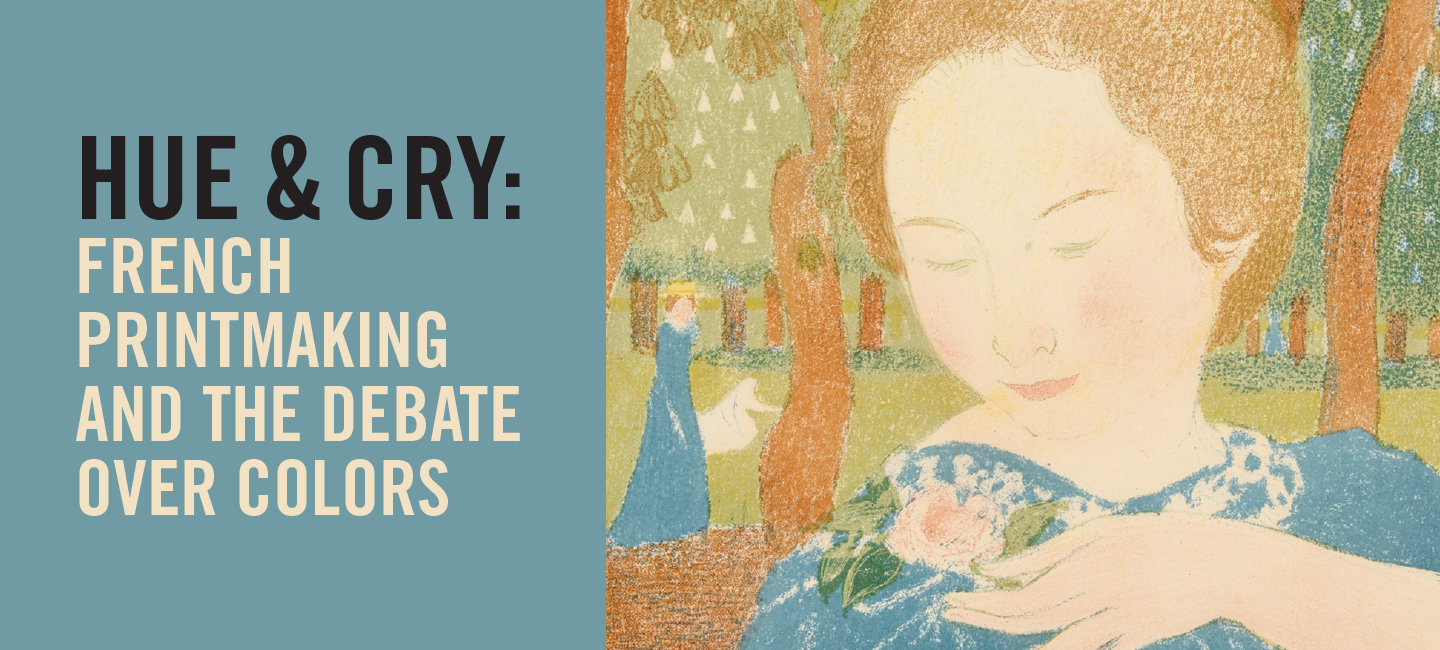PRINTS & POSTERS
In France, color printmaking lay dormant in the fine-art realm for most of the nineteenth century, tarred by its associations with the frivolity and excess of earlier royal courts and the rococo art they favored. But when Japanese color woodblock prints began to arrive in Paris in the 1850s, artists and collectors alike took notice. Because the color woodblock process, reliant on a workshop-style division of labor in Japan, was impractical for most individual artists to attempt, they sought instead to replicate the effects using intaglio processes. Mary Cassatt’s famed set of ten color aquatints inspired by ukiyo-e prints was just one of the experiments being attempted by printmakers at the time, including Eugène Delâtre and Camille Pissarro. Color intaglio prints were usually made in small editions, making them rare today. Many notable artists of the period avoided color intaglio, however, perhaps because of the need to hand off the printing process to a technician. The challenge to unitary authorship was yet another reason that objections to color printmaking persisted in this era.
Color lithography posed the greatest affront to sensitivities around printed color, in part because lithography itself had never enjoyed fine-art status. Invented in 1798 as an efficient method of reproducing sheet music, commercial printed matter, newsprint illustrations, and other ephemera in near-industrial quantities, lithography stood in opposition to the aesthetically motivated intaglio techniques, characterized by small print runs. Color lithography was, however, an ideal medium for advertising posters, which emerged as a new language of the modern city. Posters by Jules Chéret, Henri de Toulouse-Lautrec, and others—publicizing everything from the night spots of the Montmartre entertainment district to skating rinks and cough drops—rose from an “art of the street” to become the most distinctive feature of 1890s visual culture. Since posters degraded quickly with exposure to the elements, artists filled demand from collectors by printing the same designs at smaller scale, with the same lithographic technique but on finer paper. Likewise, color lithographs that had been designed from the start as portable collectibles began to incorporate the bold chromatic and visual strategies typical of posters.
